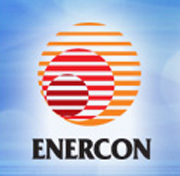At the Energy Summit held recently, the government has acknowledged ‘Energy Efficiency’ and ‘Energy Conservation’ as one of the most inexpensive options for added supplies of energy, making a lot of sense in the context of the serious energy crisis prevailing in the country.
EE/EC has proved to be a cost-effective strategy for building economies without necessarily adding to energy consumption. There is a dire need for forthwith implementation of energy efficiency programs as a national energy policy in order also to serve as a solution to global warming. Efficient energy use is essential in slowing the energy demand growth so that rising clean energy supplies can make deep cuts in fossil fuel use.
Talking of energy efficiency, we cannot avoid standards and labelling, which serves the purpose of one of the most cost-effective and proven methods to curb rising energy/electricity demand from electrical appliances and equipment to establish energy efficiency standards and labels. In fact, these programmes have the potential to effect complete market transformation for different classes of energy-saving products, at a cost far below the cost of providing new energy supply. This transformation will not only help in reduction in the electricity load but will also help in opening new avenues in exporting these goods.
Currently, the growth in demand of electricity in Pakistan has outpaced the generation and the gap is widening. According to consumption data of electricity, the domestic, commercial and industrial sectors consume 45.9% (32,282 GWH), 7.5% (5,251 GWH) and 27.5% (19,329 GWH) of the total electricity consumption respectively. In the domestic sector, the electricity is majorly consumed by lights, fans and home appliances whereas in the commercial sector, electricity is mainly used for lighting and air conditioning purposes. In the industrial sector, motors are the major consumers besides the furnaces. It is estimated that in residential and commercial sectors, lighting comprises 34% of total electricity consumption whereas fans, refrigerators, air conditioners and others consume 33%, 13%, 5% and 15% respectively of the total electricity consumed in these sectors.
Most of the above mentioned appliances and their current energy efficiency are regretfully most inefficient. Comparatively, even in the region, Pakistan is three times less efficient – especially in the industrial sector. In order to educate the manufacturers in Pakistan, a programme has been chartered to improve the existing standards and make appliances energy efficient
The level of awareness regarding the use of energy in an efficient manner has been quite low both in consumers and manufacturers and there are no energy efficiency standards in place. The appliances currently being manufactured in the country are not energy efficient and the aspect of energy efficiency is ignored by manufacturers in their quest to reduce the cost of manufacturing, in order to compete in the market. On the other hand, the consumers due to the lack of awareness regarding the pros of the use of energy efficient equipment only consider the price and go for low-priced products which are not energy efficient and thus increase the burden on the national energy pool when used.
ENERCON, the agency mandated for energy conservation, has initiated a programme for the development and implementation of energy efficiency standards and labels for home appliances. This initiative will not only create awareness regarding energy conservation through efficient use of energy but will also provide an environment conducive to the manufacturing and use of energy efficient appliances. This initiative focuses on policy development, capacity building and manufacturers’ support for compliance to energy efficiency standards and labelling regime. The programme will also involve other regional countries for compatibility of Pakistan’s EES&L with regional EES&L. This would help in removing the non-tariff barriers and enhancing the bilateral trade with partner countries. Once the energy efficiency standards and labelling regime is in place, it is expected to reduce the energy consumption in residential and commercial sectors by 10%.
For the development and implementation of EES &L regime, ENERCON has gathered the stakeholders, both from the public and private sector, and started the consultative process. According to the initial roadmap of this initiative, it is expected that the energy efficiency standards and labels for fans, motors, air conditioners, refrigerators, CFLs and ballasts will be developed and adopted. Awareness workshops for manufacturers and awareness campaigns for consumers are also being launched by ENERCON.



